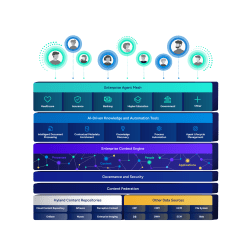Hyland IDP is a game-changer in the adoption of intelligent automation for content management processes. Using the power of generative AI (gen AI) to remove human touch points from ingestion and content management processes, Hyland IDP automates the contextualization of your content.
This allows you to derive even more value from your content, which:
- Improves efficiencies
- Enhances accuracy
- Speeds document processing
- Better serves your team and your customers
Let’s take a look at what Hyland IDP can do for your employees and customers, and examine some indicators that your organization should adopt Hyland IDP as you modernize your IT stack.
What can Hyland IDP do?
Intelligently capture and convert text from multiple channels
Using the power of AI for its optical character recognition (OCR) engine, Hyland IDP recognizes printed type, handwriting, optical marks (checkboxes, radio buttons, etc.) and data in table format. This allows for the intelligent ingestion of content into your system, no matter if it originated from scanned paper documents, email, fax or another source.


















